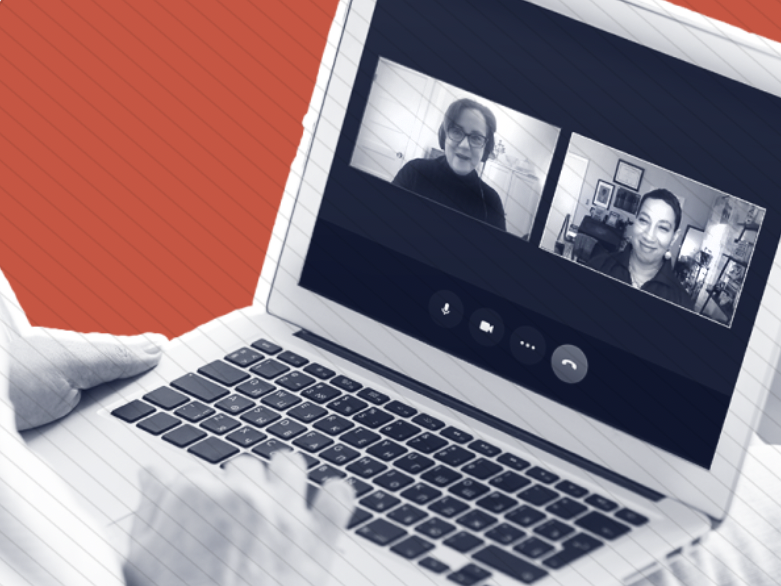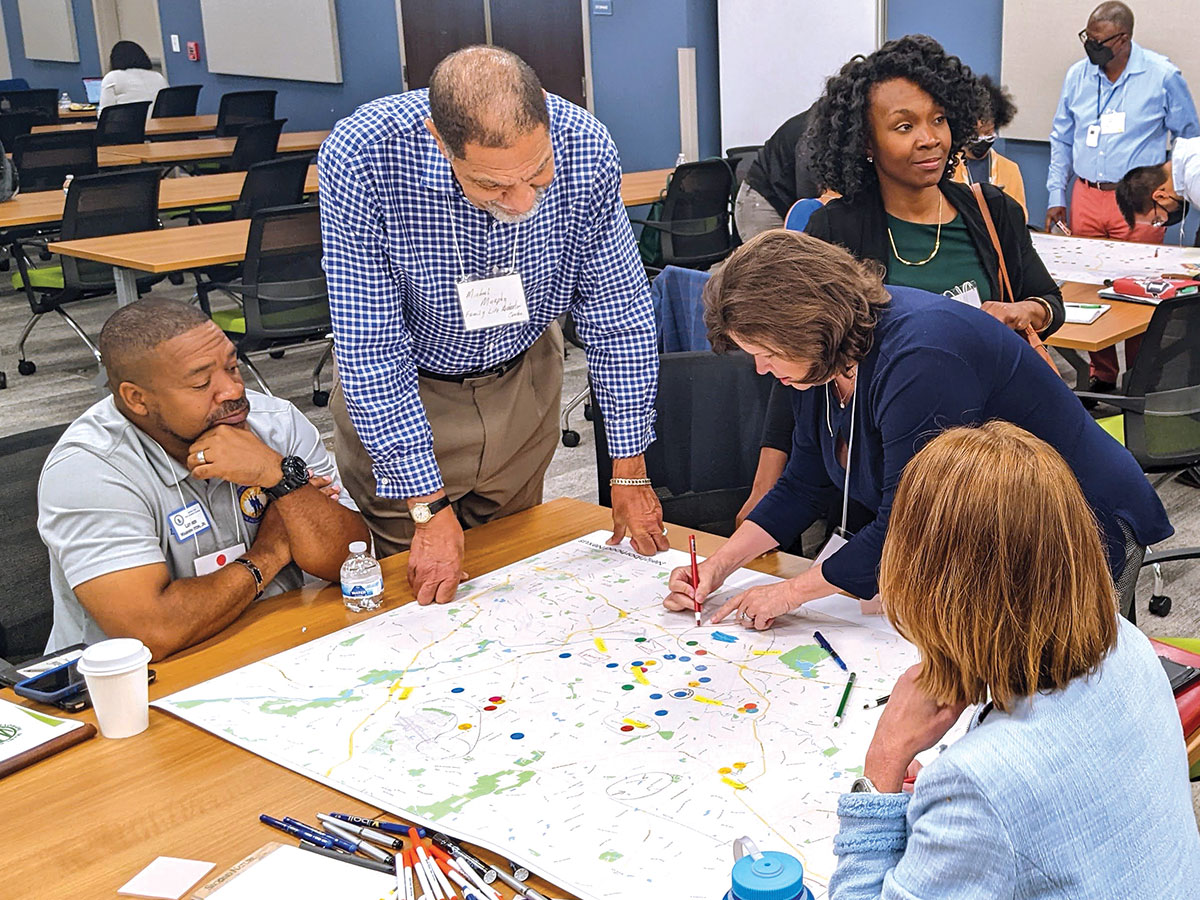
As the world changes, so must the way we approach grantmaking. Grantmakers are in a unique position to help fund and support the communities they serve. But traditional grantmaking practices are no longer enough. Transactional grant check writing belongs in the past, and clumsy capacity building initiatives need to be left behind. As the philanthropic sector increasingly turns its attention to capacity building, funders have an opportunity to strengthen the infrastructure of their grantees in meaningful and lasting ways. Capacity building is an essential part of creating sustainable change.
PEAK Grantmaking and Catchafire, an organization that connects nonprofits with pro-bono professionals to provide full-service, on-demand solutions, are redefining the narrative and urging grantmakers to look inward for what’s possible, and outward as empowered leaders of their foundations.
Recently, Catchafire Director of Community Engagement Guenevere Crum and PEAK President and CEO Satonya Fair candidly discussed how grantmakers could more effectively deliver capacity building resources. During the discussion, Fair provided three critical lessons for grantmakers to embrace as they considered more innovative, modern approaches to meeting community needs. (You can also watch a recording of their full conversation here.)
1. Build authentic relationships in the community
Relationships between nonprofits and foundations should be genuine and rooted in the desire to discover what each can bring to the table. Funders should not assume that they are well-known by all the community and introducing yourself is the first step. Similarly, while organizations may be new to you, this does not necessarily mean that they themselves are new. Many organizations have been in a community for decades delivering impact but have been chronically overlooked by foundations.
Step out from behind the desk, get into the community, and know you are representing your foundation with deep listening skills. Create a safe, authentic place where community members can share experiences, ask questions, and know they are being heard. This alone can help forge a healthy, long-term partnership.
“Understanding whether you have created space for your grantees, nonprofits, and communities to tell you what they think of your organization—and the work it does—is important,” Fair said. With that in mind, consider responses to the following questions in your introductory conversation:
- Who are you?
- What does our organization do?
- Why does your organization want to partner with this community?
- Why are you interested in this mission?
- What do you believe your organization can do to support nonprofits in this community?
- What solutions is the nonprofit looking for?
- What do other nonprofits in the community think of your organization’s work?
It is important to create a space of trust for nonprofits to comfortably tell you what they think as a path forward.
Nonprofits are often in perpetual states of crisis. There has to be a lot of listening to see and hear from one another, be present, and build a trusting working relationship to be successful. Funders have to be willing to put in the time to build a sustainable relationship.
“Create that time and space for you and the nonprofit to build that relationship and trust so you can know more about one another,” Fair said. “Call out what they’re doing that impresses you…we need to do deep work together.”
2. Use your positional power for good
There are a wide variety of power dynamics long rooted in philanthropy that must be dismantled by funders and nonprofits to strengthen sustainable relationships. Check your privilege and reaffirm your humility in advance. Funders should rise to every opportunity to visit grantees where they are rather than asking nonprofits to draw down on lean fundraising budgets and precious little time to travel to your office for a meeting.
“Be a leverager, a connector, and use your positional power for good especially for those who feel like their own voice or opinions are not seen or heard, ,” Fair said. “Whether at a nonprofit, funding institution, or something in between, you have something folks need. You have an ability to change the game, remove barriers, and be an advocate and voice for others. You have so many things in your toolbox that you can activate to help change everything for good.”
Funders should do their research on the community, their potential grantees, and those in the community doing similar work. Ask questions and know the landscape before you meet. Be prepared to provide potential funding ideas and step into an active role in creating partnership opportunities. As a funder, you’re aware of others active in the space. Don’t be shy in introducing nonprofits to other funding institutions in the community.
Be proactive and respectful towards nonprofits. Position the conversations to best understand the nonprofit’s needs including conditions on the ground that may be impacting their work.
3. Go beyond the grant
A human connection makes all the difference. Nonprofits are not simply seeking financial support—they are looking for champions of their impact. What other small and large commitments can you make toward strengthening organizations?
“It’s important to bring resources to an organization,” Crum said. “As a program officer with experience, with all these resources—put it out there as an option.” It is the program officer’s responsibility and accountability to know of all the solutions the foundation provides and be prepared to offer them. Foundations are not only a source of monetary support; they can provide support in a variety of ways as a connector and endorser, including
- providing access to Catchafire and critical capacity support year-round;
- providing endorsement on a different grant the nonprofit is applying to;
- amplifying a nonprofit’s annual report and publications on their marketing channels;
- sharing a nonprofit’s job postings online to help them fill their staffing needs; and
- connecting nonprofits to other foundations, media contacts, and organizations that can help them promote and support their organization’s mission.
Compared to other institutions in the social sector, foundations have the ability to move very nimbly and flexibly to support their communities. They can find steps to work as effective intermediaries and draw on their capacities and expertise to support nonprofits in a variety of sustainable ways.
“You’ve been hired by your organization because of your competencies and knowledge,” Fair said. “If you’re at an organization where you’re the one contact grantees interact with, then you’re a frontline worker, and you need to show up. You are their front face to the organization, and the impression you leave with your grantee will stick with them.”
To this end, funders must develop long-term relationships with grantees and create grant programs that emphasize sustainable capacity building support. Funders can also provide technical assistance, training, and coaching to grantees, and dedicate staff to focus exclusively on capacity building. This allows grantees to build their skills, knowledge, and resources while working on their key objectives.
4. Embrace a growth mindset and keep learning
Neither foundations nor nonprofits know everything they need to know. This is why conversations between the two are so critical. It’s important to embrace learning and trying new approaches. Nonprofits have a wide variety of needs and there are many ways in which foundations can provide help. “Again, it’s not just about providing a grant,” Fair remarked. “Funders have other tools in the toolbox as options.? Foundations can do a million things well that can benefit the nonprofit.” For example, funders should create a culture of continuous learning and experimentation within their foundation and develop capacity building initiatives tailored to the specific needs of their grantees.
In addition to providing resources and technical assistance, funders should also invest in organizational infrastructure and system development. Foundations should utilize data and analytics to measure the accountability and effectiveness of capacity building initiatives. An assessment of data and feedback loops will help them better understand the effectiveness of their efforts and gain insights into the impact their work is having on their grantees. Finally, funders should create a space for grantees to collaborate and share best practices and encourage collaboration across sectors to foster capacity building and innovation. By conducting and leveraging these strategies, funders can create meaningful and sustainable change.
“When foundations know better, they can do better,” Fair said in closing. “And as a result, nonprofits are better off.”
About Catchafire
Catchafire was founded in 2010 with the goal of driving positive world change through the giving of time and talent, for the benefit of the nonprofit community. With a vision to create a more empathetic, inclusive and loving world, Catchafire facilitates connections between grantmakers who seek to equip nonprofits with capacity-building resources, and professionals who want to donate their time and talent through virtual volunteering with nonprofits who need their skills. Learn more at www.catchafire.org.





